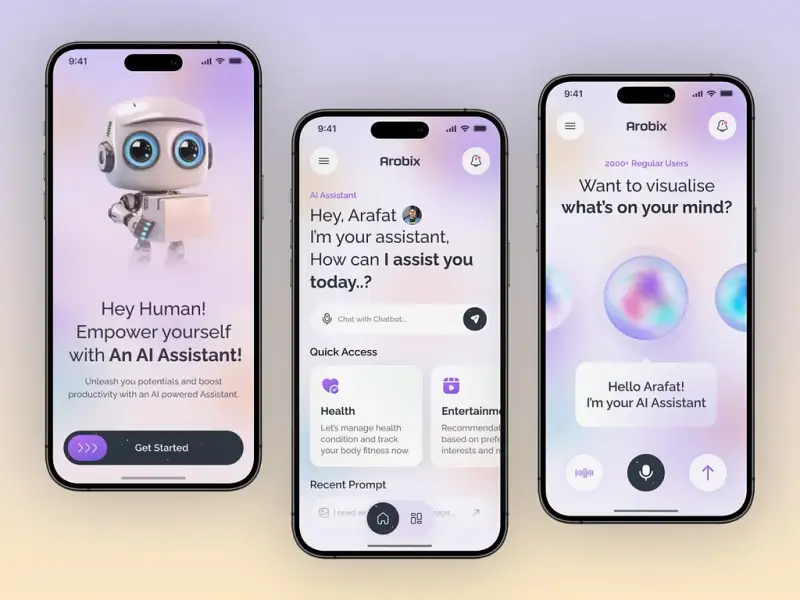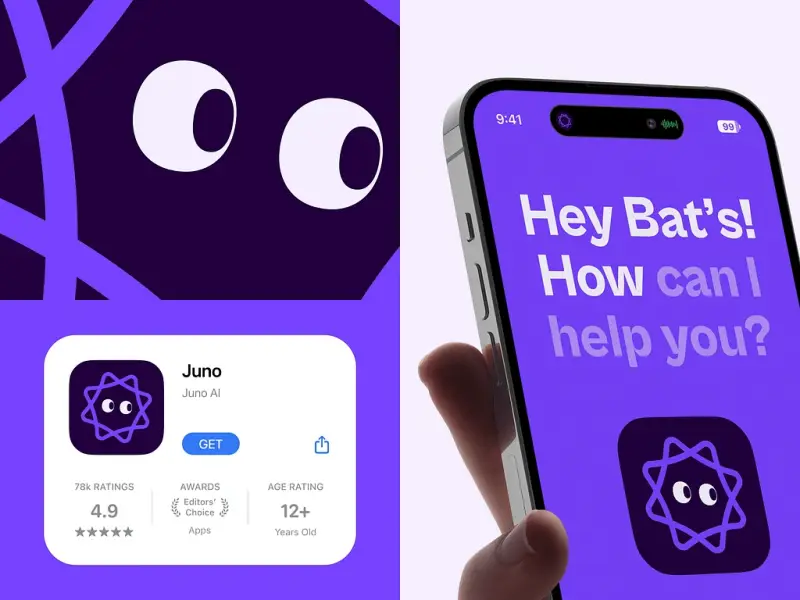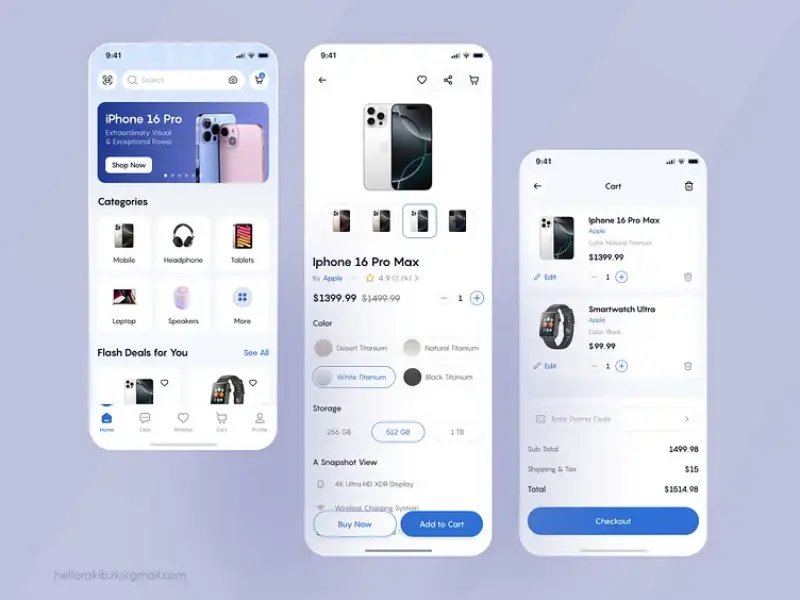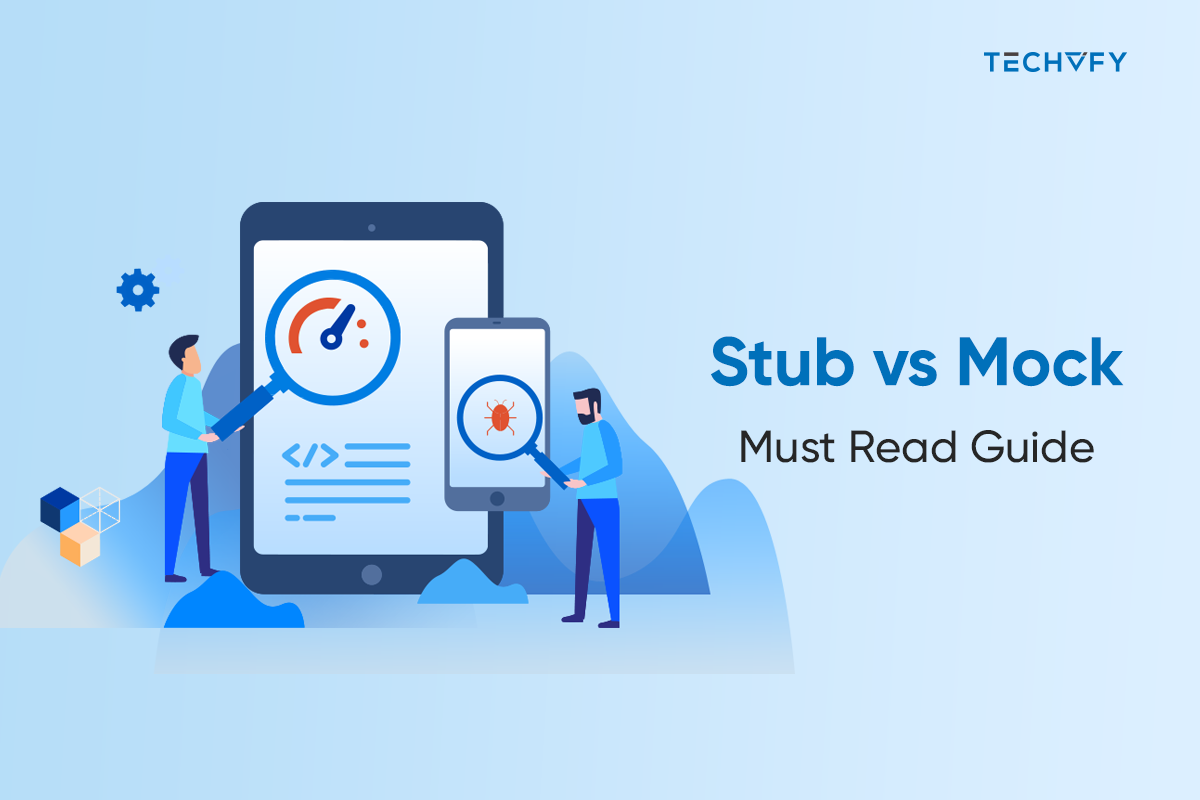Over the past few years, the rise of chatbots in ecommerce has been linked to more people buying online and the broadening of omnichannel retail. Gartner estimates that by 2027, chatbots will become the leading customer service method for 25% of businesses.
What’s driving the growth of the ecommerce chatbot market, which is expected to reach $1.25 billion by 2025? It boils down to saving costs, improving customer service, and efficiently handling interactions across various channels. Using chatbots in ecommerce helps retailers cut expenses and save time by enabling them to assist customers anytime.
I. What is an Ecommerce Chatbot?
Ecommerce chatbot examples are software programs designed to engage with users on websites instantly. They assist in customer service, respond to inquiries, suggest products, collect feedback, and monitor user interaction.
Ecommerce chatbots come in three varieties:
- Artificial intelligence (AI) chatbots, which utilize natural language processing and conversational AI to replicate human conversation and behavior.
- Rules-based chatbots, which respond to specific questions predefined by the user.
- Hybrid chatbots, which combine AI and rules-based functionalities for conversation.
Many messenger bots are compatible with platforms like WhatsApp, Instagram, Facebook Messenger, and Google Business Messenger, allowing retailers to deliver an omnichannel shopping experience to their customers.
This approach enables retailers to offer continuous support at a more affordable cost than employing full-time personnel.
Chatbot in ecommerce
II. Importance of Chatbots in Ecommerce
- Customers’ Desire for Interaction
People are inclined to communicate with brands before making a purchase, especially now that shopping is predominantly online and lacking the physical touch and feel of products. Being unavailable could be interpreted as a reluctance to engage with consumers rather than merely selling to them. Chatbots facilitate conversations with customers at their convenience, aiding purchases or alleviating their concerns, thereby showing your brand’s dedication.
- The Expectation for Immediate Responses
As a consumer, waiting for a brand to answer a query within 24 to 48 hours is often too long.
A 2022 Tidio study found that 29% of customers expect chatbots to provide help 24/7, and 24% anticipate a swift reply.
Responding to hundreds of inquiries instantly across your website and social media platforms is impractical. This is where chatbots in marketing and ecommerce become invaluable.
- Omnipresent Customers
Today, customers engage through numerous channels. According to a 2022 Salsify report, people in the US, the UK, Germany, and France interact with brands through at least 11 different touchpoints.
Your customers are everywhere, potentially reaching out via your online store, Facebook, Instagram, or WhatsApp with their queries.
Engaging in multichannel sales is crucial for e-commerce businesses to keep up with consumer demands on their preferred platforms, highlighting the importance of e-commerce chatbots.
- The Rising Costs of Live Agents
Traditionally, businesses employed live agents to handle customer queries across various departments.
However, the number of personnel required to manage all customer interactions across platforms can be overwhelming.
While human conversations hold value, the need for instant replies poses a challenge for live agents to meet today’s consumer expectations. Expanding the live agent team is not a sustainable option for those looking to optimize costs with a focus on marketing and advertising.
Understand more about Chatbots with our recent articles:
Learn More On:
III. How Chatbots Work in Ecommerce
1. User Interaction Initiation
When a customer visits an e-commerce website or engages with a brand through social media platforms, chatbots can initiate interaction by greeting the user or offering assistance. This interaction can start based on user actions, such as clicking on the chatbot icon, or when certain conditions are met, like spending a specific amount of time on a webpage.
2. Understanding User Requests
Through natural language processing (NLP), chatbots analyze and comprehend the user’s queries or statements. NLP allows the chatbot to understand human language, interpret the intent behind the user’s message, and answer in a way that resembles how people talk. This technology enables chatbots to handle a wide range of requests, from simple FAQs to more complex inquiries.
3. Processing and Responding
Once the chatbot understands the user’s request, it processes the information using AI and machine learning algorithms. For straightforward queries, the chatbot might access a predefined database of responses. For more complex interactions, the chatbot may use conversational AI to generate more nuanced and contextually relevant responses. The chatbot’s response is then conveyed to the user conversationally.
Chatbot Application
4. Continuous Learning
Machine learning enables chatbots to learn from each interaction and improve over time. Chatbots can refine their responses by analyzing past conversations, better understanding user intents, and offering more accurate and helpful information in future interactions. This continuous learning process helps enhance the chatbot’s overall effectiveness and efficiency.
5. Integration with Ecommerce Systems
E-commerce chatbots are often integrated with the website’s backend systems, like tracking inventory, processing orders, and customer relationship management (CRM) systems. This integration allows chatbots to provide personalized recommendations, check product availability, track orders, and even process transactions, offering a seamless shopping experience to the user.
6. Omnichannel Support
Many ecommerce chatbots are designed to operate across multiple channels, including the brand’s website, social media platforms, messaging apps, and email. This omnichannel approach ensures that customers receive consistent support regardless of how they interact with the brand, enhancing customer satisfaction and loyalty.
IV. Use Cases for Ecommerce Chatbots
E-commerce businesses are increasingly turning to chatbot solutions for various tasks. Here’s a look at how some of the top ecommerce chatbots use cases:
Gathering Customer Information
Chatbots efficiently collect visitor data, such as product interests and communication preferences, to enhance lead generation strategies.
Providing Shopping Assistance and Customer Support
Chatbots answer product-related questions, helping with size guides, variations, pricing, and making personalized recommendations.
Upselling and Cross-selling
Chatbots suggest additional or better products based on the shopper’s selections, mimicking an in-store sales experience online.
Preventing and Recovering Abandoned Carts
By engaging customers at the point of cart abandonment with offers or information, chatbots reduce cart abandonment rates and can even follow up on social media.
Engaging Customers
Chatbots facilitate interactive conversations for personalized engagement, offering product tips and new item introductions to encourage repeat visits.
Collecting Feedback and Reviews
Chatbots more effectively gather customer feedback and reviews through conversational interactions, helping businesses proactively address concerns.
Facilitating Order Tracking and Updates
Chatbots provide real-time order tracking and updates, reducing customer service inquiries by offering tracking links and delivery modification options.
V. Challenges of Chatbots in Ecommerce
Understanding Complex Queries: Chatbots often need help to accurately interpret and respond to complex customer queries due to limitations in Natural Language Processing (NLP) technology. Misunderstanding nuances, slang, and typos can lead to customer frustration and miscommunication.
Limited Personalization: Chatbots’ capability to offer personalized interactions is less sophisticated than human interactions. They may need to recognize previous interactions or adapt their communication style to the customer’s tone, which can positively impact the customer experience.
Integration with Existing Systems: Integrating chatbots with current e-commerce platforms, CRMs, and inventory management systems can be intricate and labor-intensive. Effective integration is essential for chatbots to access crucial customer data and product information.
Maintaining Up-to-Date Information: It is challenging to keep chatbots updated with the latest inventory changes and promotions. Failure to do so can result in providing customers with outdated information, leading to dissatisfaction and potential loss of sales.
Ecommerce Application
Privacy and Security Concerns: Chatbots handle many sensitive personal and financial data, raising significant privacy and security concerns. Ensuring compliance with data protection laws and securing customer information from breaches is crucial.
Dependency on Scripted Responses: The reliance on scripted responses limits chatbots’ ability to manage unique or unexpected queries, often leading to generic or irrelevant replies that can diminish trust in the chatbot’s utility.
User Acceptance and Trust: Building user trust in chatbot interactions is challenging. Some customers prefer interacting with humans, particularly for complex issues or significant purchases, and may be skeptical about the assistance bots provide.
Technical Glitches and Downtime: Chatbots are susceptible to technical issues, including glitches, downtime, or slow response times, particularly under high interaction volumes. Such problems can frustrate customers and harm the e-commerce brand’s reputation.
VI. Future Trends in Chatbots for E-commerce
- Advanced Personalization
Future ecommerce chatbots will leverage deep learning and data analytics to offer highly personalized shopping experiences. By analyzing past interactions, purchase history, and browsing behavior, chatbots can predict customer preferences and tailor recommendations. - Voice-Activated Shopping
With the rise of voice assistants like Amazon Alexa and Google Assistant, voice-activated chatbots are becoming increasingly important in e-commerce. These chatbots will allow customers to shop, place orders, and seek support through voice commands, making the shopping experience more convenient and hands-free. - Visual and Augmented Reality Integration
Chatbots will integrate with visual and augmented reality technologies to offer immersive shopping experiences. A chatbot will guide customers through seeing how a product looks in their space or how clothing items fit before purchasing. - Omnichannel Presence
E-commerce chatbots will become more seamlessly integrated across multiple channels, including social media platforms, messaging apps, and brand websites. This omnichannel approach will ensure a consistent and unified customer experience, regardless of where the interaction begins or ends.
Conclusion
Ecommerce chatbots are revolutionizing online customer interactions, offering round-the-clock support, personalized shopping experiences, and efficient service across multiple channels. We expect chatbots to become even more sophisticated as technology advances, further enhancing the e-commerce landscape.
For businesses looking to stay ahead, TECHVIFY provides top-notch AI and chatbot services tailored to your needs. Elevate your e-commerce platform with our expertise and drive towards a future of seamless online retail experiences.
Ready to transform your ecommerce strategy with cutting-edge chatbots? Contact TECHVIFY today and take the first step towards digital excellence.
TECHVIFY – Global AI & Software Solution Company
From Startups to Industry Leaders: TECHVIFY prioritizes results, not just deliverables. Accelerate your time to market and see ROI early with high-performing teams, AI (including GenAI) Software Solutions, and ODC (Offshore Development Center) services.
- Email: [email protected]
- Phone: (+84)24.77762.666








